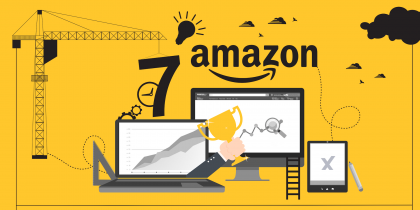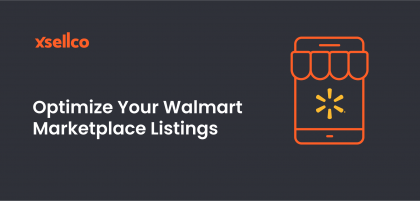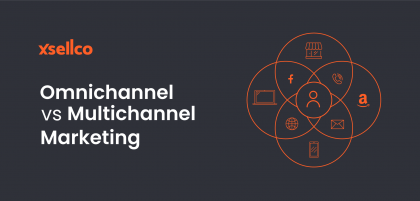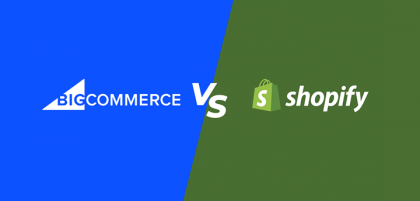Investments in e-commerce technology are on the rise—but are sellers pumping cash into the wrong tools? A recent report from IFTTT found that 60 percent of retailers have increased their technology budgets, choosing to invest in personalization, social media and artificial intelligence (AI). However, IFTTT’s research also found that the average consumer isn’t ready to embrace innovative shopping technologies.
This comes as no surprise. Over the last six years or so in e-commerce, we have been obsessing over the wrong investment paths. All sorts of new tech or methods have failed, from personalization to virtual dressing rooms and more.
Consumers are now forcing the rate of change in their demands largely due to the power technology has placed in their hands. In my opinion, this is creating a false economy. Consider the following stats from Salmon Consulting Group:
- Just under 25 percent of online consumers do all of their shopping online.
- Of these, 88 percent put convenience and speed of delivery as their priority over anything else.
- Over 70 percent of consumers under the age of 35 say they want a single loyalty scheme across all of their shopping destinations.
Up to now, innovation has been largely centered on personalization techniques, getting closer to your customer and, of course, mobile strategy. Simply put, these efforts have failed. Yes, there are some exceptions, but that is all they are.
Success is down to the old reliables still doing what they do best: paid channels, email marketing and a trading mentality centered on being part of a real and inclusive retail approach.
The good times are not necessarily over, but the days of all online retailers gaining guaranteed double- or triple-digit growth year over year are gone.
A couple of weeks ago, I wrote a piece suggesting e-commerce strategy does not exist—and I maintain that assertion.
We have had to follow technology first (and too slowly) and now we are following consumers. This is putting pressure on e-commerce companies and consumer-facing brands to invest in the wrong areas.
Why not think of your customer, solve their problem, align that to your business and build around that premise?
It is no surprise that we have already seen some high-profile store closures this year, including Toys “R” Us and New Look. It is sad, but no surprise. It’s simple economics: cost base was too high. The desire to go direct-to-consumer (D2C) is the latest added pressure resulting in multiple store closures for brands such as Nike and, more recently, Adidas.
How can we change this? Here are some tips and companies to watch with this in mind.
#1. Build affordable e-commerce stores
Consider SaaS e-commerce platforms. Not everyone will need to be considering enterprise in terms of their platform choice. SaaS e-commerce platforms such as BigCommerce and Shopify have made it easy to set up, transition to and grow an online store. A fixed cost approach gives greater certainty to the bottom line.
#2. Marketplace testing for market validation
A simple step to see how prepared you are for the rigors of the ultra-competitive world of e-commerce would be to set up an Amazon or eBay store. If you cannot make these work, why would you even begin the process of setting up your own store online?
Marketplaces mean growth and cost management all at once. People argue at their expense but the truth is, the costs involved in marketplace selling are fixed and on your own website they are not.
To trade on marketplaces, you need to combine all of the skills into one area as opposed to multiple bums on multiple seats. Investing in getting your team up to speed on marketplace selling is a time-based cost. Why would you not do this?
Mass consumer aggregation centers around marketplaces globally and when you think about it, they go there with a purpose. A browser on Google is not showing the same level of intent. Point being, you have to work harder to understand the customer’s motive. Oh and almost half of product searches start on Amazon. Are you sure you still don’t want to sell there?
And you do not have to rely on Amazon. Reduce risk simply by expanding to many marketplaces and geographies. There really is no easier way to scale a business.
#3. Invest in your fundamentals and cost center management
Some emerging companies have their fingers on the pulse of where focused investments should be made. As part of your strategy this year and beyond, a balanced assessment of all cost metrics should be reviewed and investment encouraged.
Bankhawk Analytics: a simply brilliant proposition, measuring your banking and card acquiring costs versus what you should be paying using APIs, industry knowledge and measured negotiation. Already seeing the cost reduction in offline sectors. Making their foray into e-commerce and making waves.
Webio Ltd.: conversational commerce at its finest. Cost reduction through AI-driven customer service using existing business data. Huge capacity and scope for growth through multiple customer journeys. Being the voice activation space, too, means that early engagement with companies like these will future-proof your business and add to your sales funnel and conversion, guaranteed.
ZigZag Global: reducing the cost of returns. Too simple, but very effective and solving a problem most retailers have not yet considered.
All of this before you measure any sales metrics. Mature and new online businesses need to better understand and manage their cost base to ensure goodwill from boards is not eroded for poor margin performance or such poor cash flow that your business cannot grow.
As you look to your H2 strategy (which will be centered around Black Friday) it is imperative that a renewed focus on services and products that deliver marginal savings always has got to be part of your focus. The alternative is not worth consideration.








